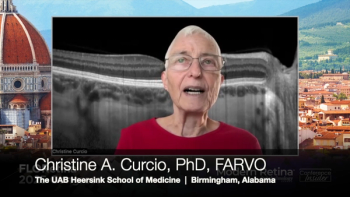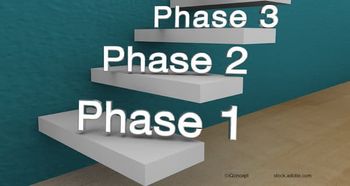
Brolucizumab-dbll 6 mg approved by US FDA for treatment of diabetic macular oedema
According to Novartis, the approval is based on year 1 data from the Phase III KESTREL and KITE clinical trials investigating brolucizumab-dbll 6 mg vs aflibercept 2 mg in diabetic macular oedema patients.
Novartis announced that the FDA has approved brolucizumab-dbll 6 mg (BEOVU) for the treatment of diabetic macular oedema (DMO).
According to the company, the approval represents the second FDA-approved indication for brolucizumab-dbll 6 mg, which was first approved for the treatment of wet age-related macular degeneration in 2019.
In April, Novartis announced that the European Commission (EC) has approved brolucizumab 6 mg for the treatment of visual impairment due to DMO.
The approval in DMO represents the second indication for brolucizumab 6 mg granted by the EC, which was first approved for the treatment of wet age-related macular degeneration in 2020. The EC decision applies to all 27 European Union (EU) member states as well as Iceland, Norway and Liechtenstein.
The FDA approval was based on year one data from the Phase III, randomly assigned, double-masked KESTREL and KITE studies, which met their primary endpoint of non-inferiority in change in best-corrected visual acuity (BCVA) from baseline versus aflibercept at year one.1,2 In aggregate, a numerically lower proportion of patient eyes treated with brolucizumab-dbll 6 mg had intraretinal fluid, subretinal fluid or both at week 52 versus eyes treated with aflibercept (in KESTREL 60.3% in the brolucizumab-dbll 6 mg arm versus 73.3% in the aflibercept arm; in KITE 54.2% versus 72.9%, respectively; statistical significance was not tested).2
Through year one, half of brolucizumab-dbll 6 mg patients (55% in KESTREL and 50% in KITE) remained on a 12-week dosing interval following the loading phase.1,2 During this time (by week 52), patients received a median of 7 brolucizumab-dbll 6 mg injections.1,2 Patients treated with BEOVU demonstrated a significant reduction from baseline in central subfield thickness (CST) starting at week four and continuing up to week 52.1,2
Per the approved BEOVU prescribing information, following the loading phase of 5 doses injected 6 weeks apart, patients should be treated once every 8 to 12 weeks.1 Throughout the KESTREL and KITE trials, aflibercept patients were dosed every eight weeks, as recommended in its FDA-approved label.1,2
“The FDA approval of BEOVU in DMO marks a significant milestone for US DMO patients, many of whom are of working age and struggle with treatment adherence while juggling multiple doctor’s visits every month,” Jill Hopkins, SVP and Global Development Unit Head, Ophthalmology, Novartis, said in a news release. “KESTREL and KITE were the first pivotal trials to assess an anti-VEGF on 6-week dosing intervals in the loading phase, suggesting BEOVU may offer fewer injections from the start of treatment through year 1.”
Hopkins added that the company looks to offering a new treatment option to help address the unmet needs of patients with DMO.
“This FDA approval follows the recent European Commission approval and allows more patients around the world to potentially benefit from this important medicine,” she said in the statement.
The most common adverse event (≥ 5%) reported in patients who received BEOVU in the DME clinical trials was conjunctival haemorrhage.1 Intraocular inflammation (IOI) rates in KESTREL were 4.7% for brolucizumab 3 mg (including 1.6% retinal vasculitis), 3.7% for brolucizumab-dbll 6 mg (including 0.5% retinal vasculitis), and 0.5% for aflibercept 2 mg.2 IOI rates in KITE were equivalent (1.7%) between the brolucizumab-dbll 6 mg and aflibercept 2 mg arms with no retinal vasculitis reported.2 Retinal vascular occlusion was reported in KESTREL for brolucizumab 3 mg (1.1%) and 6 mg (0.5%), and in KITE for brolucizumab and aflibercept (0.6% each).2 In KESTREL, the percentage of patients who experienced ≥15 letter loss from baseline at year one was 1.6% for brolucizumab 3 mg, 0% for brolucizumab-dbll 6 mg and 0.5% for aflibercept.2 In KITE, the percentage of patients who experienced ≥15 letter loss from baseline at year 1 was 1.1% for brolucizumab-dbll 6 mg and 1.7% for aflibercept.2 Brolucizumab 6 mg is the commercialized dose of brolucizumab-dbll 6 mg.1
Novartis remains committed to bringing brolucizumab-dbll 6 mg to appropriate patients who may benefit from this important medicine. As of June 2022, brolucizumab-dbll 6 mg is available as a pre-filled syringe in the US. This will provide eye care professionals an option that offers fewer steps than the vial.
About the KESTREL and KITE clinical trials
KESTREL and KITE are global, randomized, double-masked, Phase III, 2-year studies comparing the safety and efficacy of brolucizumab-dbll 6 mg and aflibercept in the treatment of patients with visual impairment due to DME.6,7 KESTREL and KITE involved 926 total patients in 36 countries.6,7
In the loading phase of both trials, patients in the brolucizumab-dbll 6 mg arms were treated every 6 weeks for a total of 5 doses; patients in the aflibercept arms were treated every four weeks for a total of five doses, in line with its label.6,7
According to the company, In the first year of the study, following the loading phase, patients in the brolucizumab-dbll 6 mg arms were subsequently treated every 12 weeks, with those demonstrating disease activity moved to dosing every eight weeks.6,7 After the loading phase, patients in the aflibercept arms were treated every eight weeks.6,7
References
1. BEOVU [US prescribing information] East Hanover, NJ. Novartis: 2022.
2. Brown DM, Emanuelli A, Bandello F, et al. KESTREL and KITE: 52-Week Results From Two Phase III Pivotal Trials of Brolucizumab for Diabetic Macular Edema. Am J Ophthalmol. 2022;238:157-172.
3. Romero-Aroca P. Managing diabetic macular edema: The leading cause of diabetes blindness. World J Diabetes. 2011;2(6):98-104.
4. Schmidt-Erfurth U, Garcia-Arumi J, Bandello F, et al. Guidelines for the Management of Diabetic Macular Edema by the European Society of Retina Specialists (EURETINA). Ophthalmologica. 2017;237(4):185-222.
5. Kiss S, Chandwani HS, Cole AL, Patel VD, Lunacsek OE, Dugel PU. Comorbidity and health care visit burden in working-age commercially insured patients with diabetic macular edema. Clin Ophthalmol. 2016;10:2443-2453.
6. Data on file. KESTREL clinical trial protocol (CRTH258B2301). Novartis, 2021.
7. Data on file. KITE clinical trial protocol (CRTH258B2302). Novartis, 2021.
Newsletter
Get the essential updates shaping the future of pharma manufacturing and compliance—subscribe today to Pharmaceutical Technology and never miss a breakthrough.








































